Exam 2 - CTXT 121 Visual Culture in Context: Pre-Modern Global Perspectives
1/36
There's no tags or description
Looks like no tags are added yet.
Name | Mastery | Learn | Test | Matching | Spaced |
|---|
No study sessions yet.
37 Terms
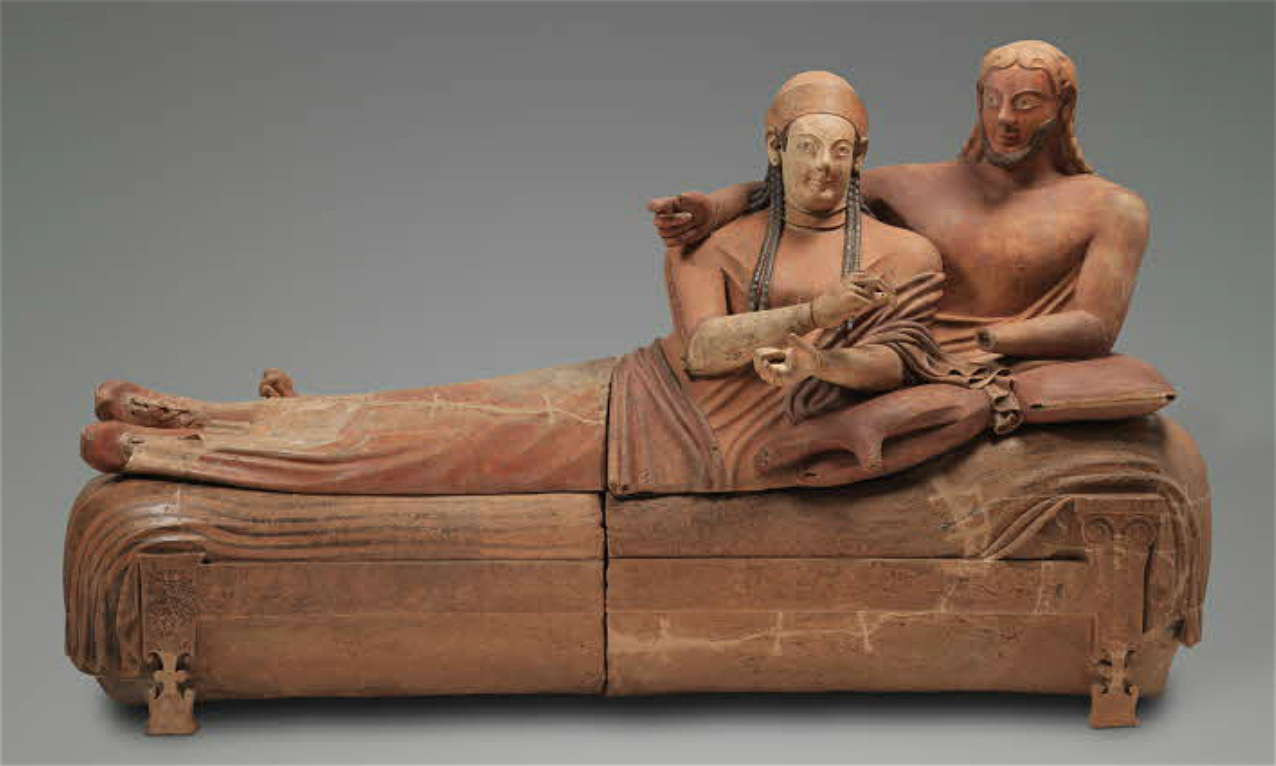
*Sarcophagus from Cerveteri, Italy, c. 520BCE, terracotta, length 6’ 7”, Etruscan (S. 6.9)
-Ashes and bodies are buried
-Made out of clay terracotta
-Ionic column is here too on the legs of the work
-They would have been holding drinks/pomegranate in man's other hand/egg in her hand (regeneration or
life)
-Eating together reclining on the couches (dinner party)
-Long braids, almond eyes, archaic smile (borrowed)
-Men and Women eating together at the time was seen as wrong
- Most likely married
- Would have had offerings placed on their hands once buried
-Depicted a happy and relaxed life with loved one's
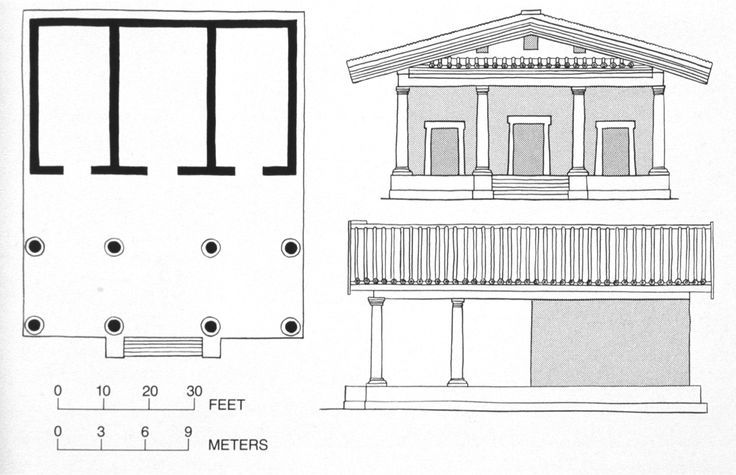
*Plan and model of Etruscan temple, based on Vitruvius, de architecture (S. 6-3)
3 Cella’s vs the Greek having only one
-In contrast to Greek temples, the columns and stairs are located only at the front of the temple rather than
around the entire structure.
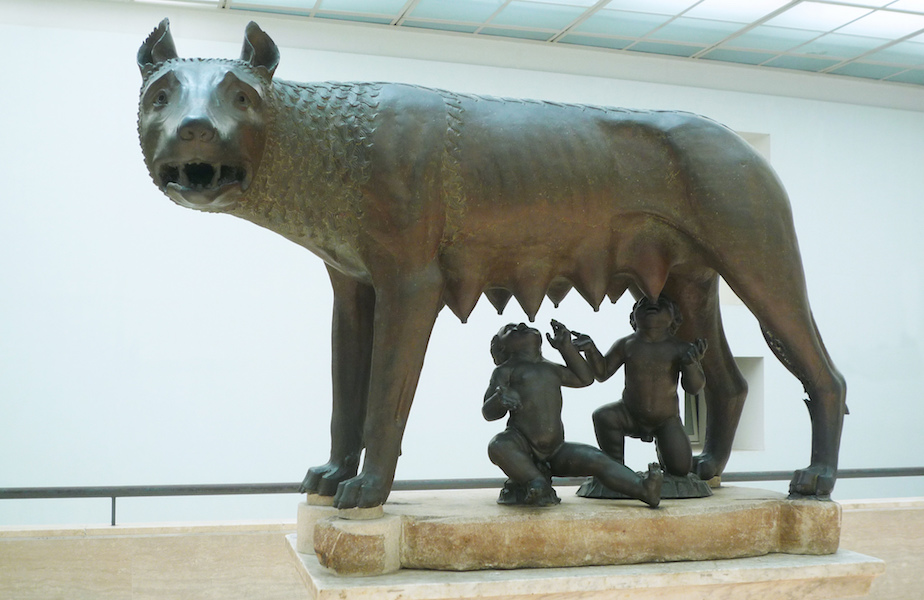
*Capitoline She-Wolf, c. 500BCE (or 800CE) (Boys 15th c.), bronze, 33 ½”, Etruscan (S. 6.11)
-Depicted the story of Romulus and Remus
-Bronze
-wolf guarding babies, she looks starved, emotion in her face
-Romulus and Remus wouldn’t have been alive if it wasn’t for her
-the gods had a plan for these children so he sent the wolf
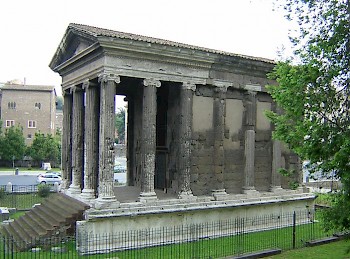
Temple of Portunus, Rome, c. 75 BCE, Roman Republic (S. 6-17)
-mix of Greek and Estruscan temples
-it has one stair, extended porch, free standing column,which is from the estruscans
-visual effects of column all around like the greeks
-1 cella like the Greeks
-ionic order
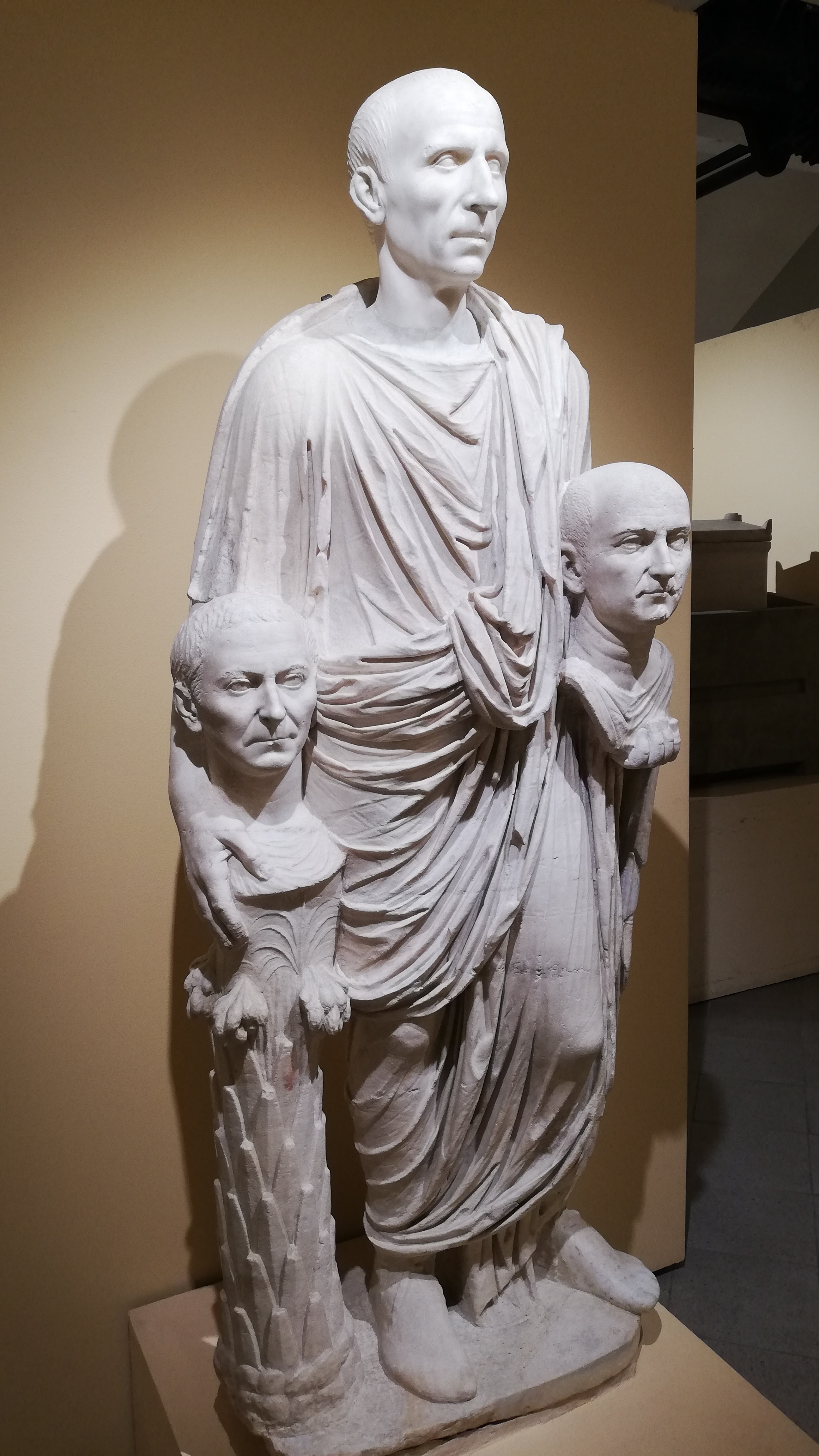
*Barbarini togatus, c. 15 BCE, marble, 5’5”, Roman Republic (S. 6-15)
-Senator were depicted to be older with verism, this is because older people are wiser
toga = Patrician class garment (indicates social class/status)
-Romans are invested in portraiture when they wanted to remember something; especially important for
lineage
-he is an example of a senator because only the Patrician men wear the toga
-he is more realistic (ex wrinkles, less body exposure, receding hair line)
-he is with 2 other portraits (Imagines)
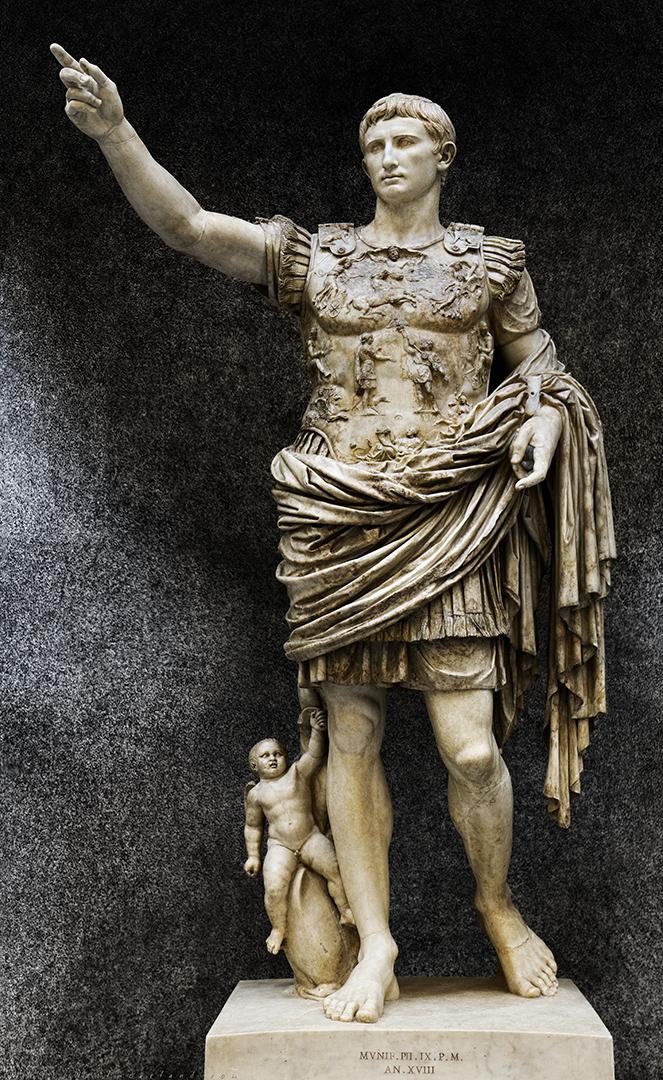
*Augustus of Primaporta, early 1st c. CE, marble, 6’ 8,” Imperial Rome (S. 6-18)
Contrapposto
Imposing
Depicted as young, contrast to roman republic
Wearing roman general attire
Commander in chief
No shoes, supposedly depicts him as holy
Cupid on dolphin next to his foot is a signifier he is related to the deity Venus
Breastplate is full of Imager and personification of gods.
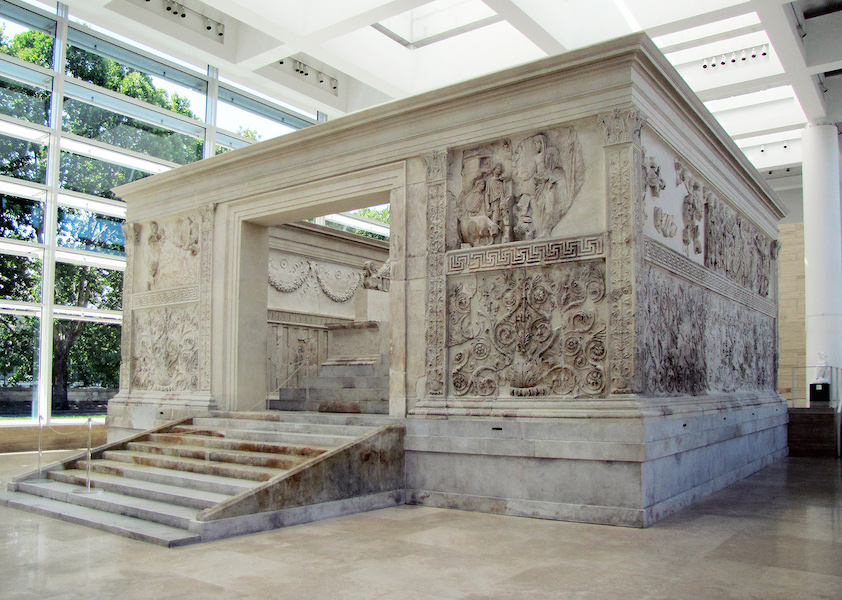
*Ara Pacis Augustae (Altar of Augustan Peace), Rome, 13-9BCE, marble, Imperial Rome (S. 6-19)
Augustus wants to put a piece of Rome everywhere.
This specific one would be on a road to Rome
Ara Pacis is in the center, she is “earth”
Holding two babies, twins, twins are Goodluck.
Symbolizes everything is perfect under Augustus
Agrippa is married to Augustus’s daughter, next to him are a teenager and a child and Livia. Behind them is Augustus is his wife.
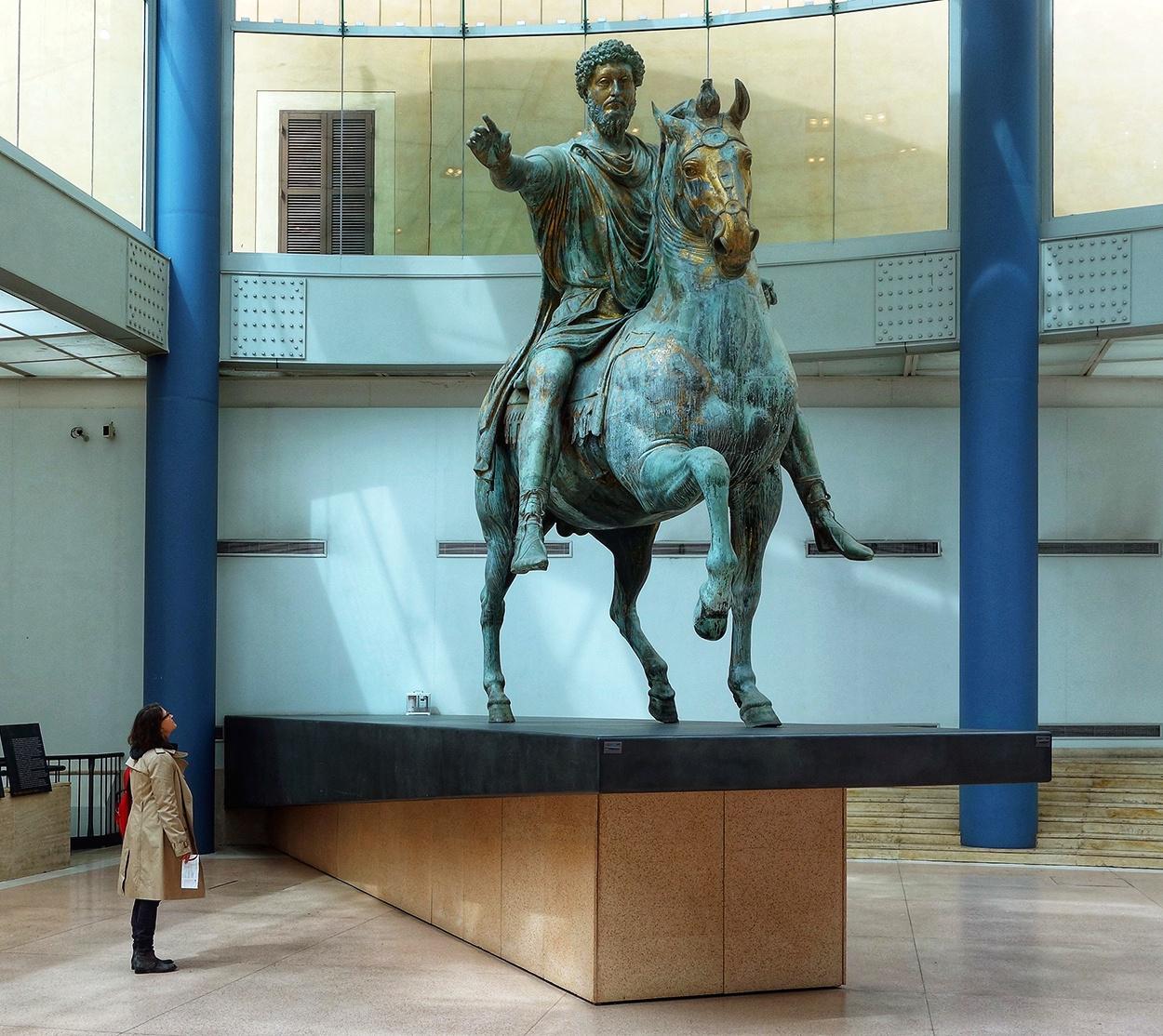
*Equestrian statue of Marcus Aurelius, c. 176CE, bronze, 11’6”, Imperial Rome (S. 6-57)
Marcus Aurelius is depicted as slightly older with a beard. The statue is 11.4FT tall equestrian portraits are made of bronze.
He is wearing the robe of a scholar
He is a philosopher (Especially Greek Philosophy)
Hairstyle is reminiscent of Greek popular styles
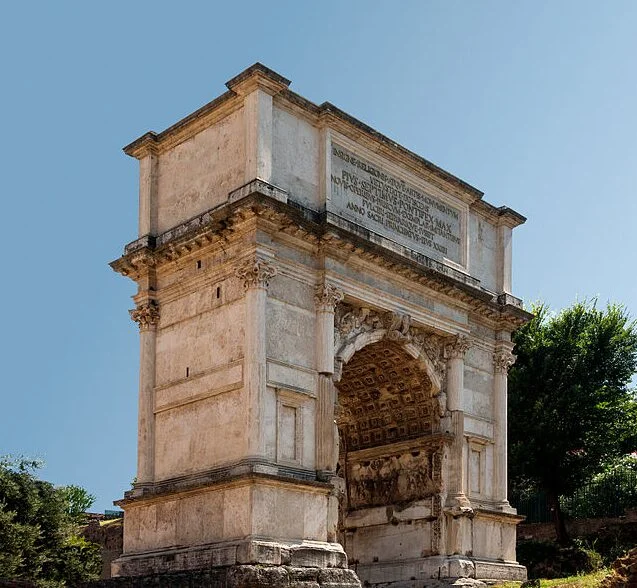
*Arch of Titus & Detail of Spoils from Jerusalem, Rome, c. 81CE, 50’H, Imperial Rome (S. 6.36-37)
50FT tall arch a Triumphal art
Celebrates years and military activity under Titus
Built by his successor
At its core is a barrel vault (A rounded arch extended in space almost tunnel like)
Relief sculpture depicts roman soldiers walking through an arch, If you walk through the arch you watching them go through their own arch
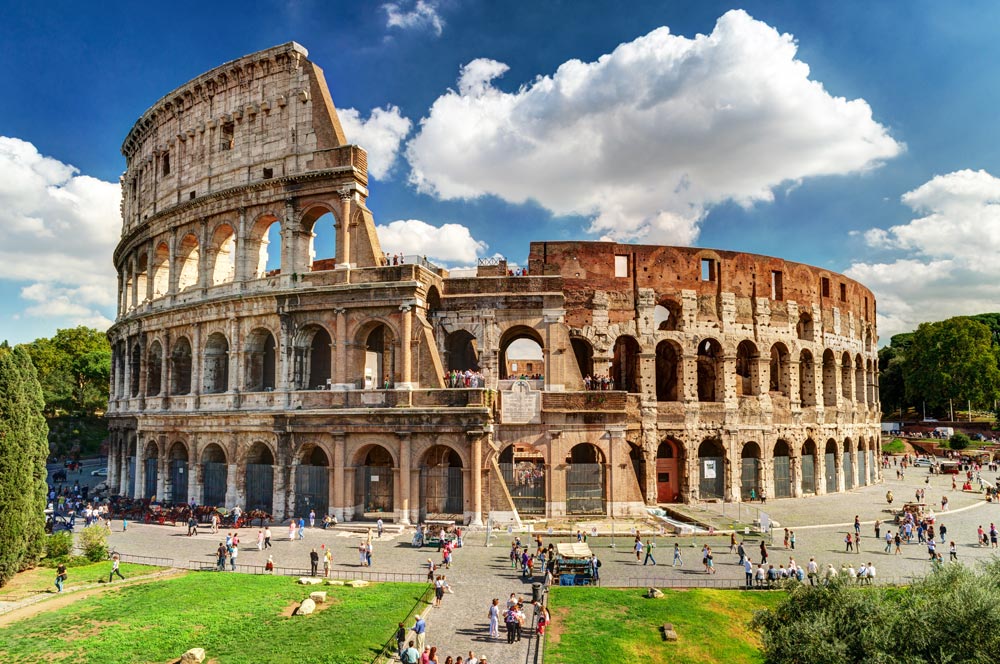
*Flavian Amphitheater (Colosseum), Rome, 70-80CE, Imperial Rome (S. 6.38-39)
Vespasian’s begins the construction of the colosseum by draining Nero’s lake
Built for entertainment, free entertainment
Depending on class you can be farther or close to the event
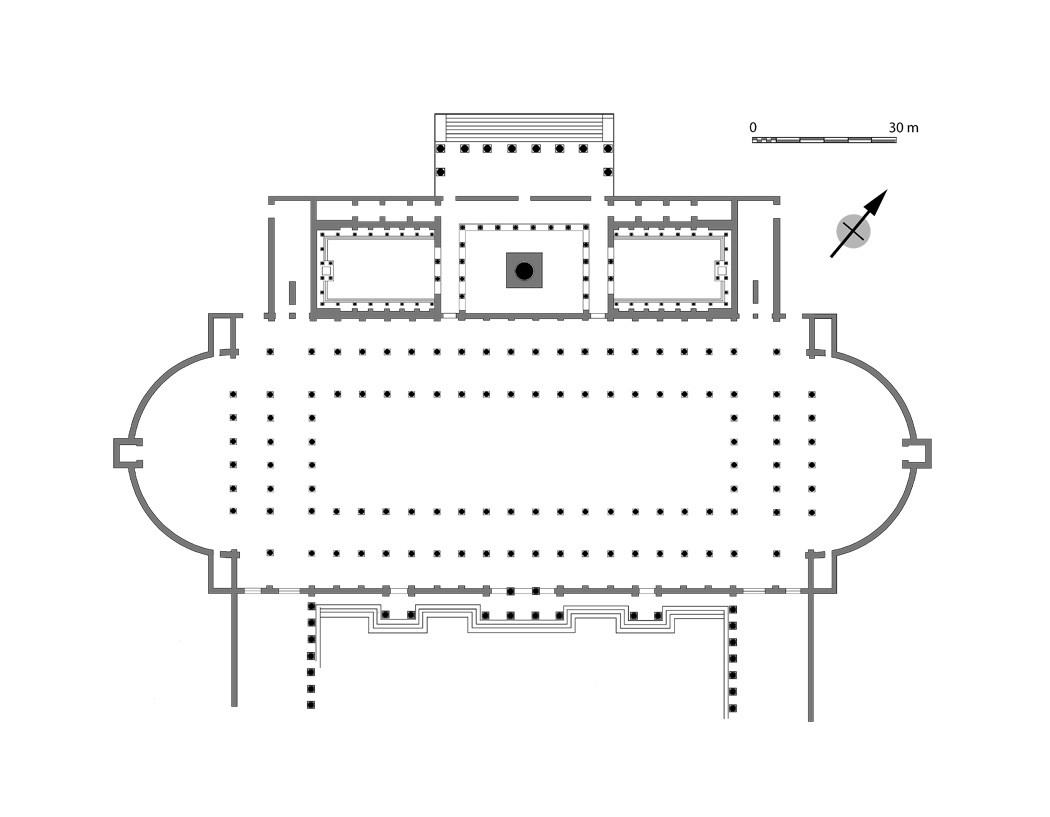
*Basilica Ulpia, Forum of Trajan, Rome, c. 110-113CE, Imperial Rome (S. 6.43-44)
Built next to Augustus’s forum
There was man equestrian statue of Trajen
Column of Trajan celebrating his victories in Germany
385FT x 182Ft
Entered through by the long side
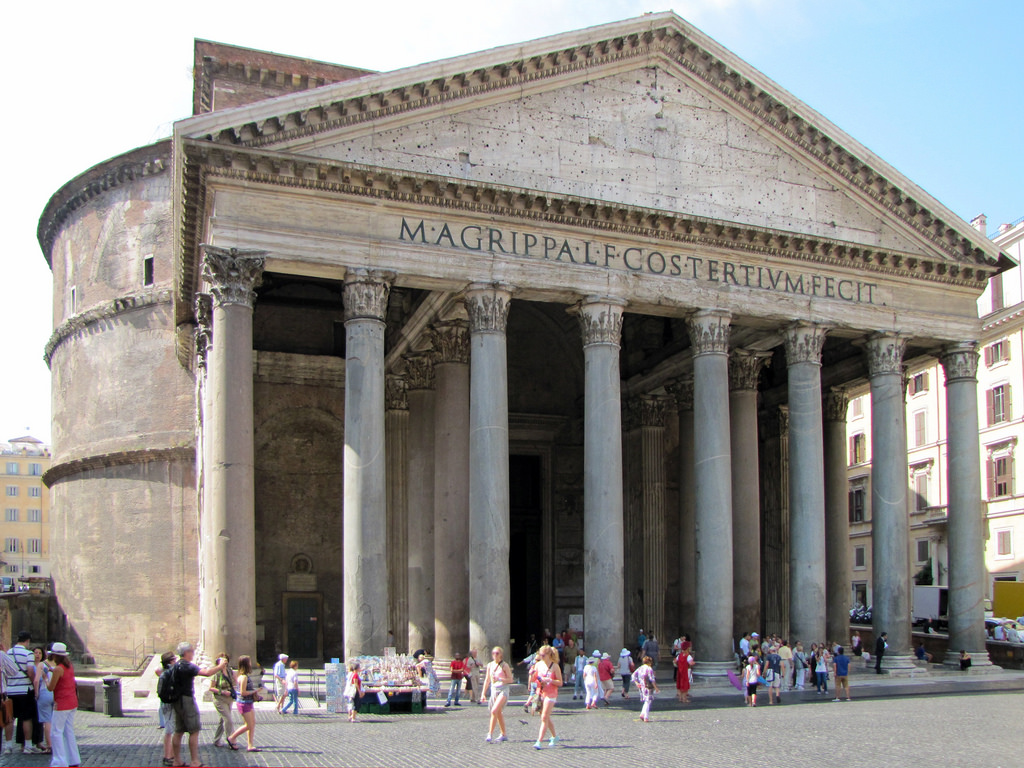
*The Pantheon, Rome, c. 110-128CE, Imperial Rome (S. 6.49-52)
Buried steps as of modern
Forces you for a frontal approach
It is meant to structure you experience
Unlike most roman temples it's round
Uses of pummel stone
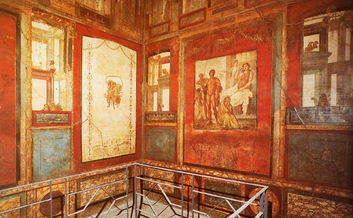
*Ixion Room, House of Vetii, Pompeii, 62-79CE, Imperial Rome (S. 6.26-28-29)
A home split into apartments, bought by brothers who bought their freedom from slavery and became wealthy people
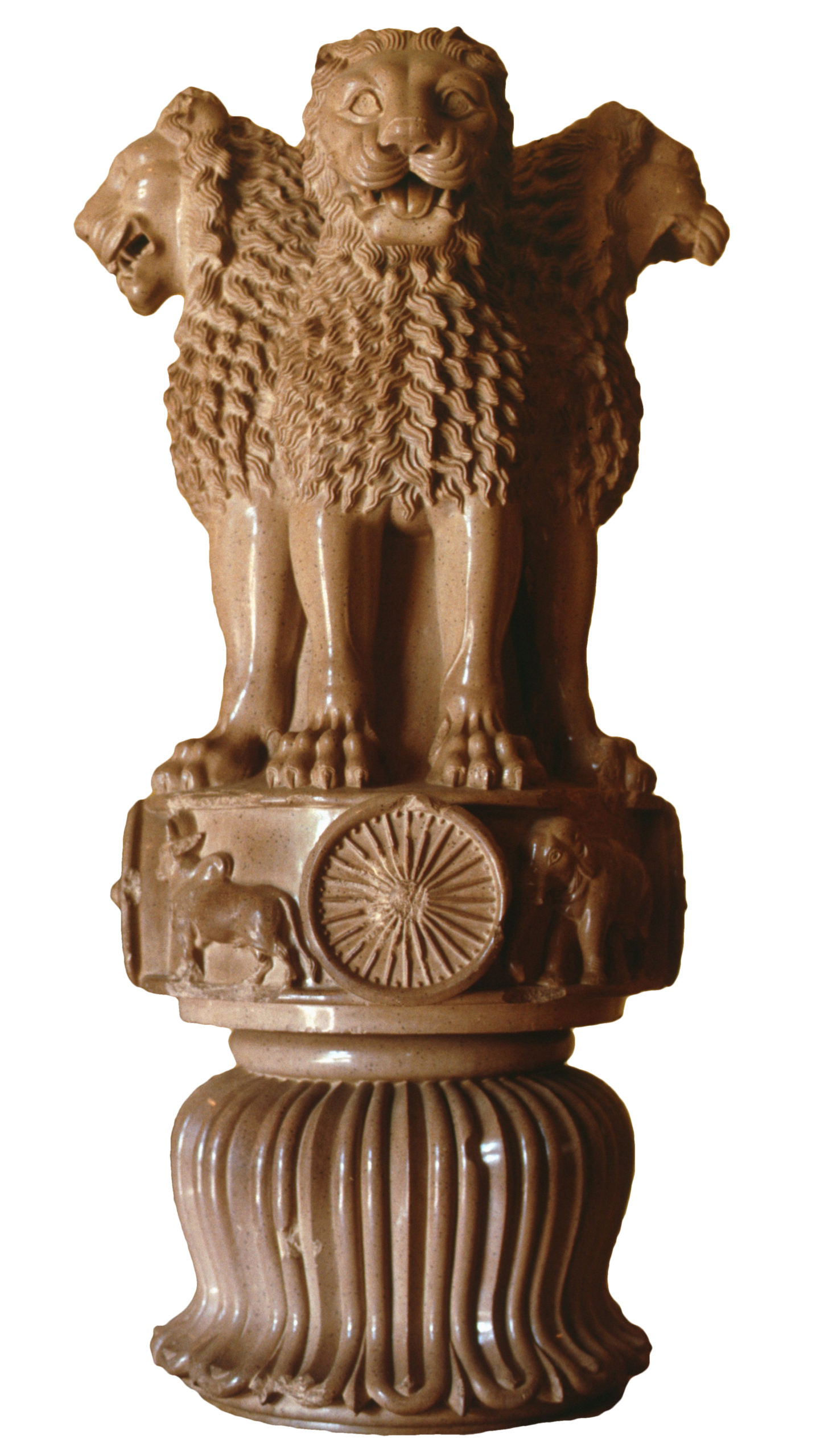
*Lion Capital of Sarnath, Uttar Pradesh, India, c. 250BC, Maurya Period, (S. 10-6)
7 Ft tall
Highly symbolic
The base is a lotus, representing reaching for the light/enlightenment
Spoked wheel is Dharmachakra, representing Buddhist belief
4 lions, mouths open. Lions represent the ruler’s clan the lion clan.
This kind of capital is usually put with another wheel on top of it.
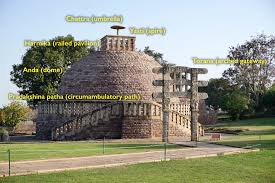
*Great Stupa, Sanchi, Madya Pradesh, India, c. 250BC, enlarged c. 150-50BC, Maurya
Buddhas remains and ashes are here.
Center is connection between heaven and earth
It forces you to walk around
Gateways are called Torana
Sight of meditation, circumambulation (walk around in a circle) Ambulate=Walk Circum=Circumference
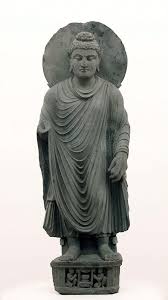
*Standing Buddha, from Gandhara, c. 100-200CE, Gandhara Style, Kushan Period (S. 10-14)
Buddha can be recognized by Lakshanas (Distinguishing marks); Monks robe, Halo, Urna, Ushnisha, Long earlobes, Golden body, long arms, wheel imprint (Chakra), Mudras. Ushnisha a cranial bump signifying more brain.
Contrapposto
Located in Gandhara a region conquered by alexander the great
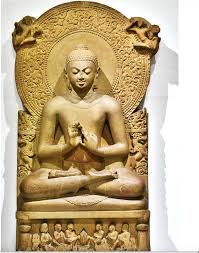
*Buddha Preaching his first Sermon, Sarnath, 465-485, Mathura Style, Gupta Period (S.10-18)
Underneath the buddha in the center is he wheel (Dharmachakra) The idea so when buddha begins preaching he is spinning the wheel, the wheel is facing us so that Buddhism is spinning outward to us and everyone.
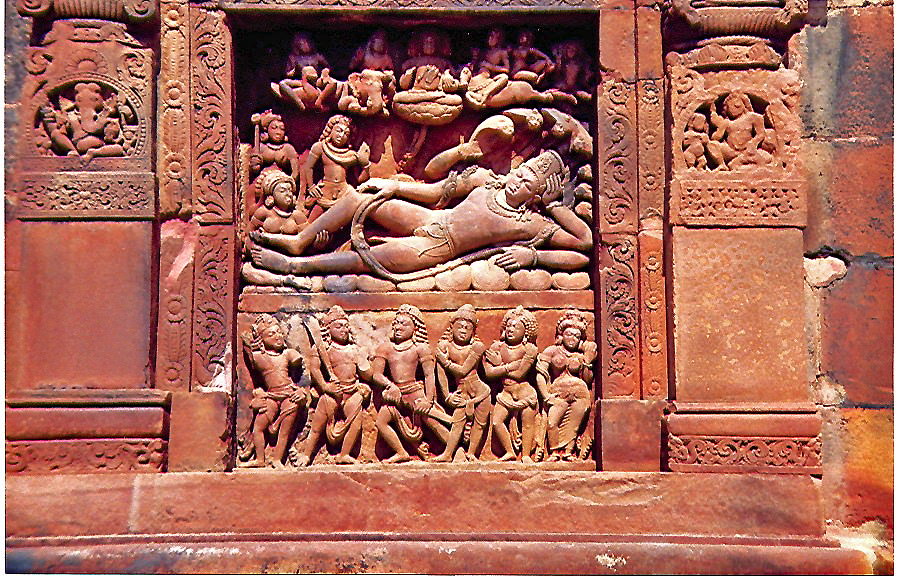
*Vishnu over Cosmic Waters, Vishnu Temple, Deogarh, India, c. 500, Gupta Period (S. 10-17)
Brahman = Creator
Vishnu = Preserver
Shiva = Destroyer
Hindu gods will be wearing lots of jewelry
In this Vishnu is dreaming while getting his feet rubbed and his dream is the creation of our world. Underneath him there are demons wanting to cause chaos and there are also personification and manifestation of Vishnu ready to preserve.
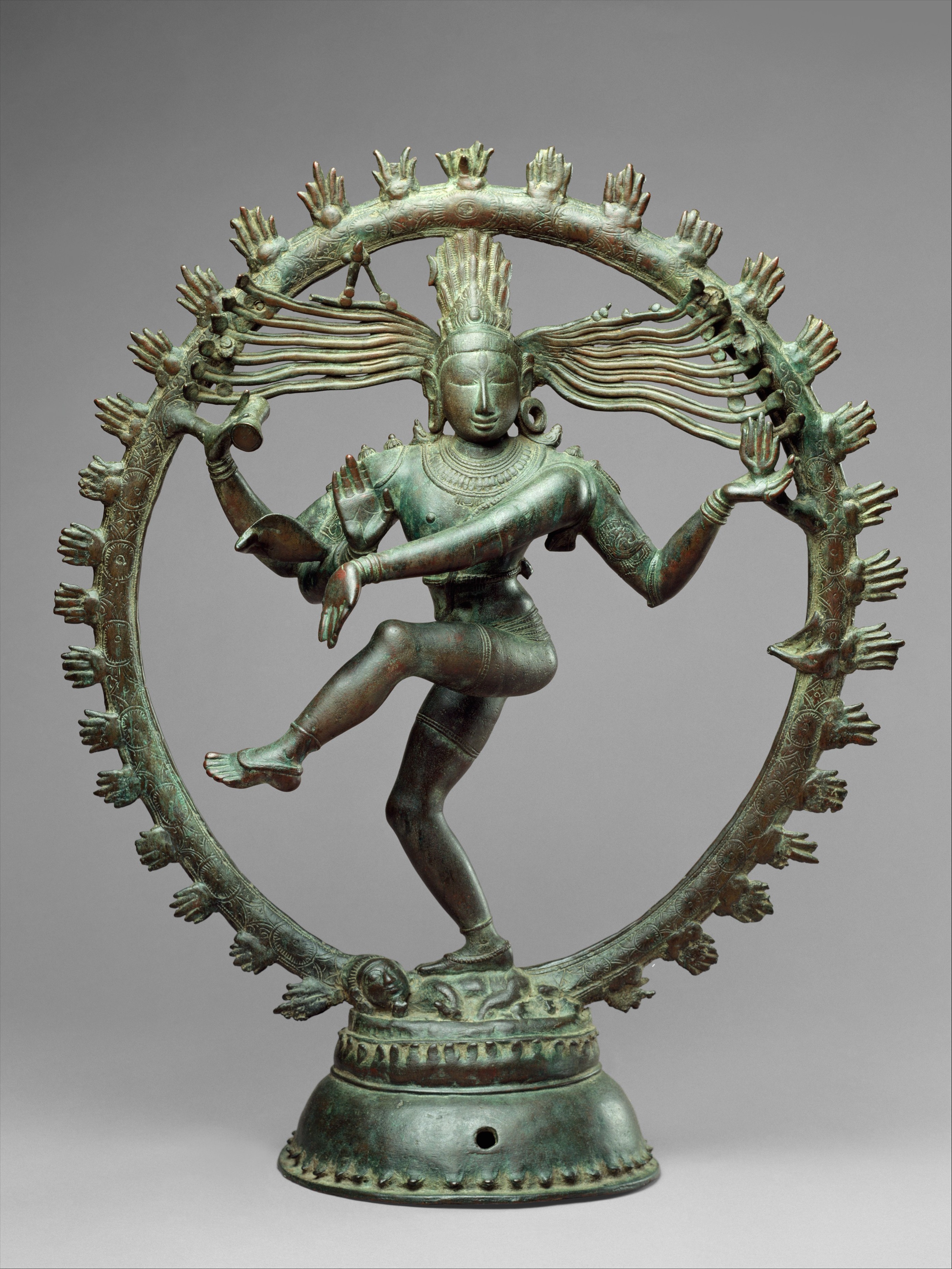
*Shiva Nataraja, c. 1000, Chola dynasty (S. 10-33)
Idea is the material itself is magical like the god, alchemy.
Intended to be placed on a a temple
It's portable because the gods are not always at the temple, many times they come to you in the market.
You can’t always come to the deity, but the deity can come to you
The deity is shiva and they are dancing to the rhythm of the universal making sure it continues in the cycle.
Back right hand is a drum, the beat of the universe
Back left is a flame, constant destruction.
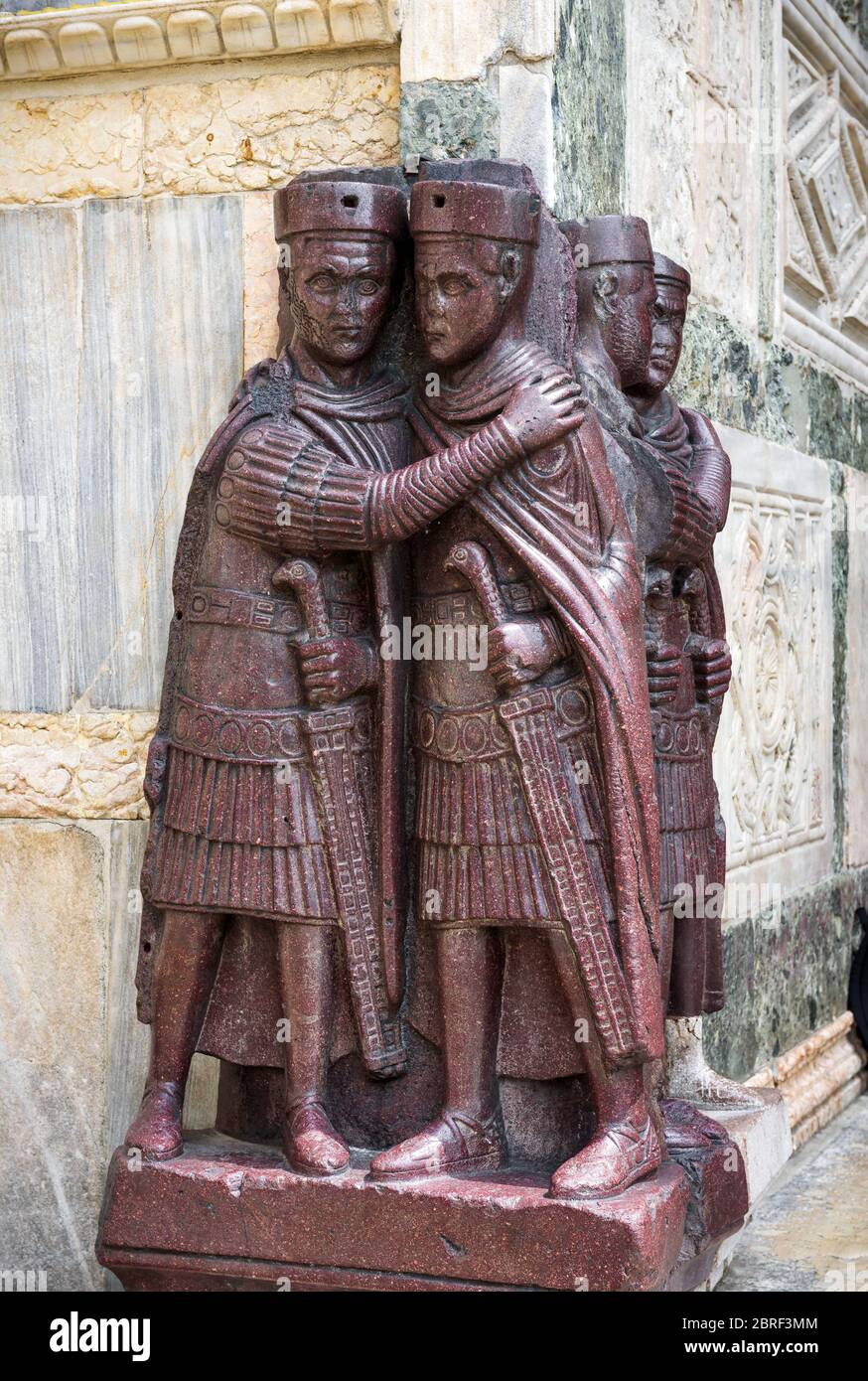
*The Tetrarchs, c. 300CE, Porphyry, 50”H, Imperial Rome (S. 6.62)
The Image of tetrarchy, made of porphyry stone. Was stolen and taken to Venice at one point.
Divided by 2 pairs, senior emperor is embracing the junior. They are all the same height indicating equal power
Depicted very close together, signifying unity amongst the four
Compared to Augustus, they are rigid, unrelaxed, and the Tetrarch is more of a message than a portrait
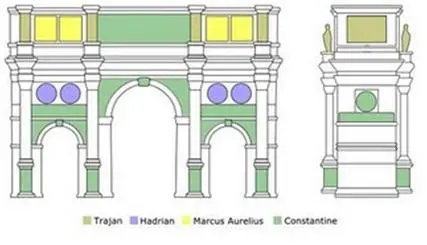
*Arch of Constantine, Rome, 312-315CE, Imperial Rome / Late Antique (S. 6.65, 66)
Victory arch, 3 arches made by Constantine after winning. It’s next to the colosseum
Inscriptions on it are about his win
Concrete core and marble on it.
He commissioned artist on his color but other colors like Olive, Yellow, Blue, and green are taken fragments by previous emperor’s architectural monuments. Olive: Trajan. Blue: Hadrian. Yellow: Marcus Aurelius. Green: Constantine. He picked/took from only the good emperors to signify that he is also one of the good emperor’s
Details on it shows Constantine’s face carved over older emperors in the arch
Another detail is Constantine in the middle with no head. Lots of imaginary lines leads us to Constantine’s head
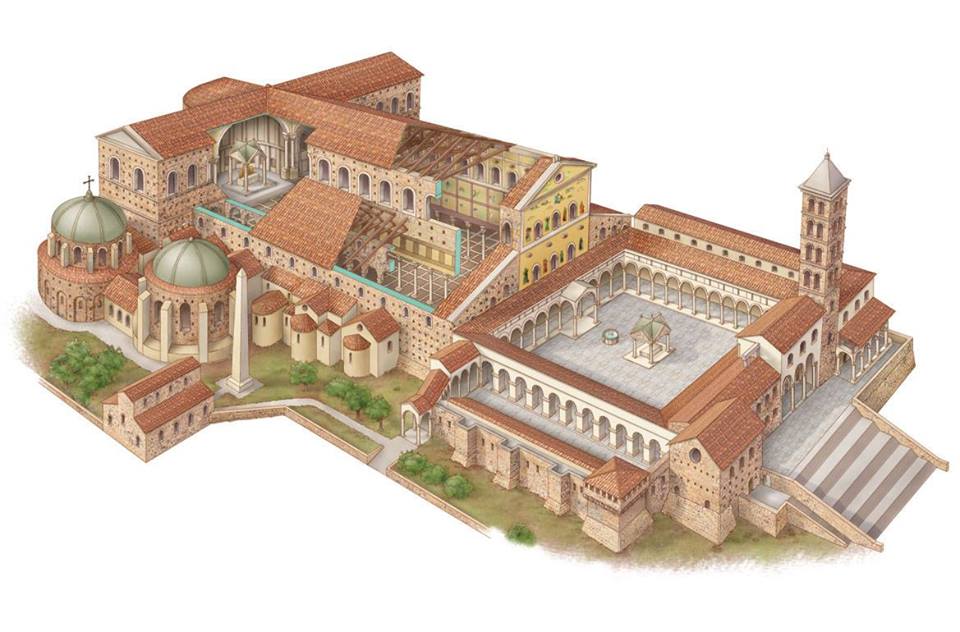
*Old St. Peter’s Basilica, Rome, c. 320-327CE, Late Antique (S. 7.9, 7.13)
First church
Columns in the church are spolia’s
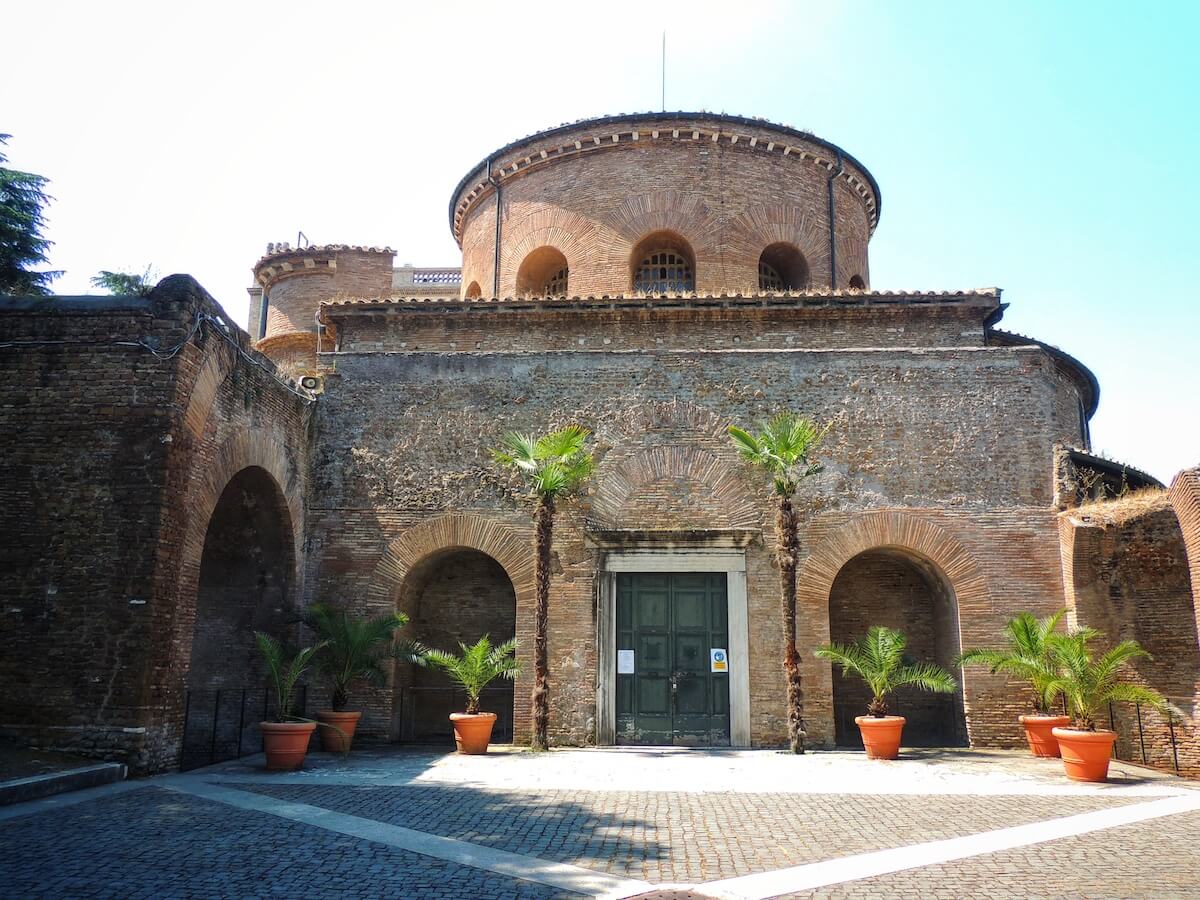
*Santa Costanza, Rome, c. 350CE, Late Antique (S. 7.12, 7.14-7.15)
Burial sight of Constantine’s daughter, Costanza
Barrel Vault ornamented with mosaic
Lots of imagery especially repeated imagery
Her Coffin in the center
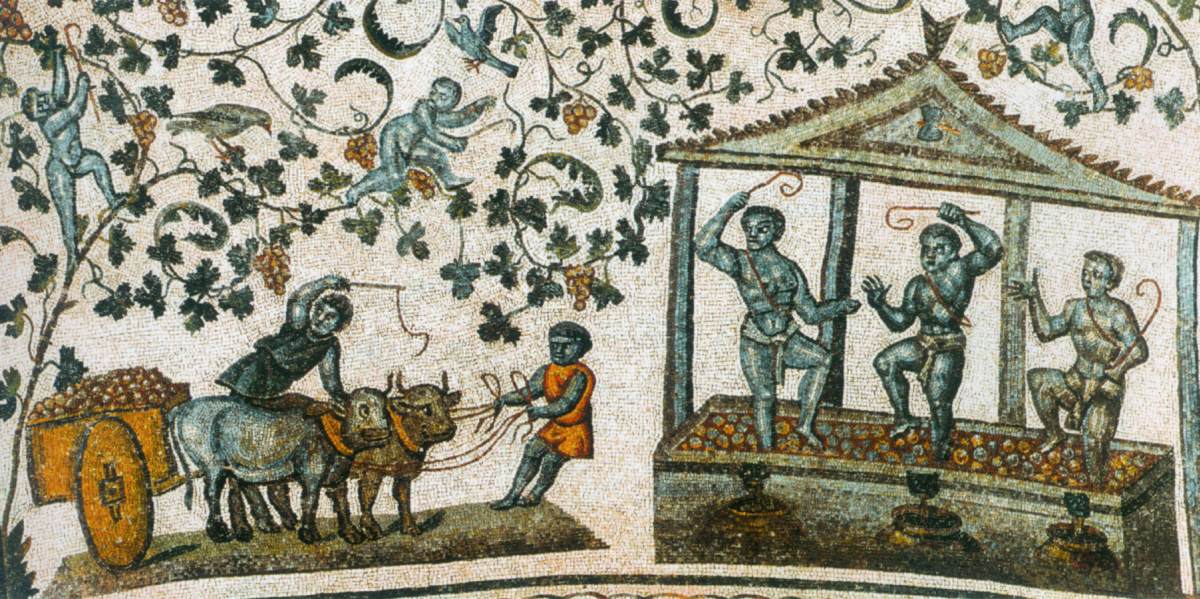
*Harvesting grapes mosaic, Santa Costanza, Rome, c. 350CE, Late Antique
Grape vines teeming with life.
They are making wine with the grapes
The figures re stomping the grapes.
Eucharist is bread and wine that are made as the blood and body of Christ
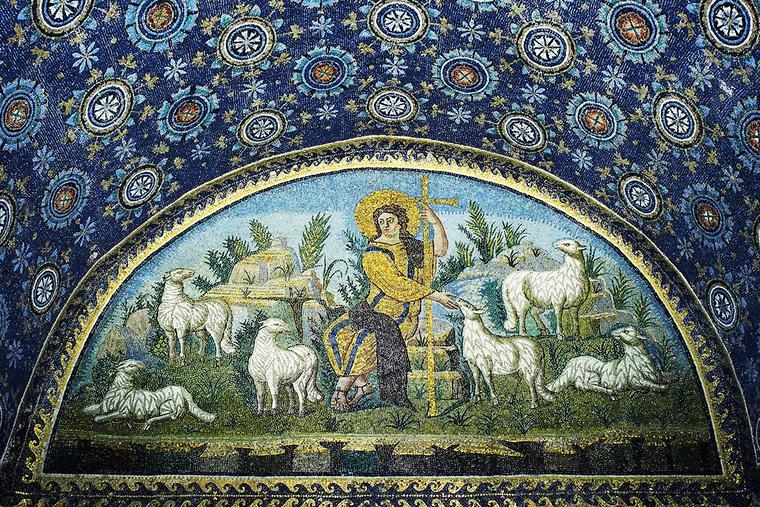
*Good Shepherd mosaic, Oratory of Galla Placidia, Ravenna, c. 425-426CE, Late Antique (S.7.18-20)
Halo, clear Christian symbolism in the form of Cross. The garment of Christ is symbolized as divine
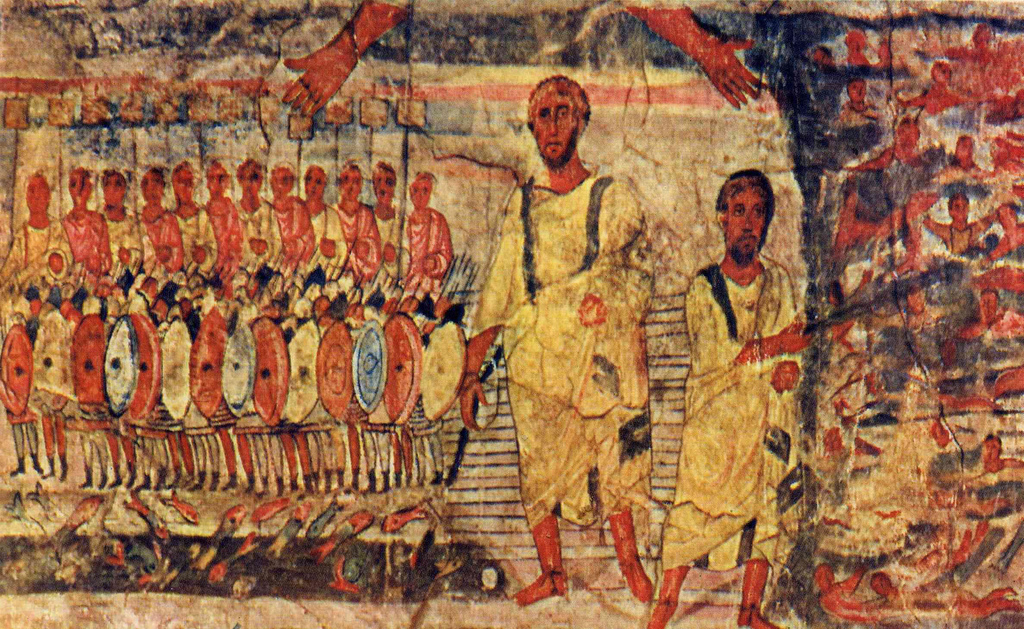
*Full view and detail of Moses crossing the Red Sea, Synagogue, Dura Europos, Syria, 244-245CE, Late Antique (S. 7.3,4)
2 Moses, Blank space in between. It creates a physical separation of the 2 scenes
On the left moses reaches his hands with his staff
Moses reaches his hand/path and secures a path for his people in the second scene
Th waters have closed and there are people flailing on it, this is the Egyptian army after moses closes the red sea, drowning the Egyptian army and protecting his people
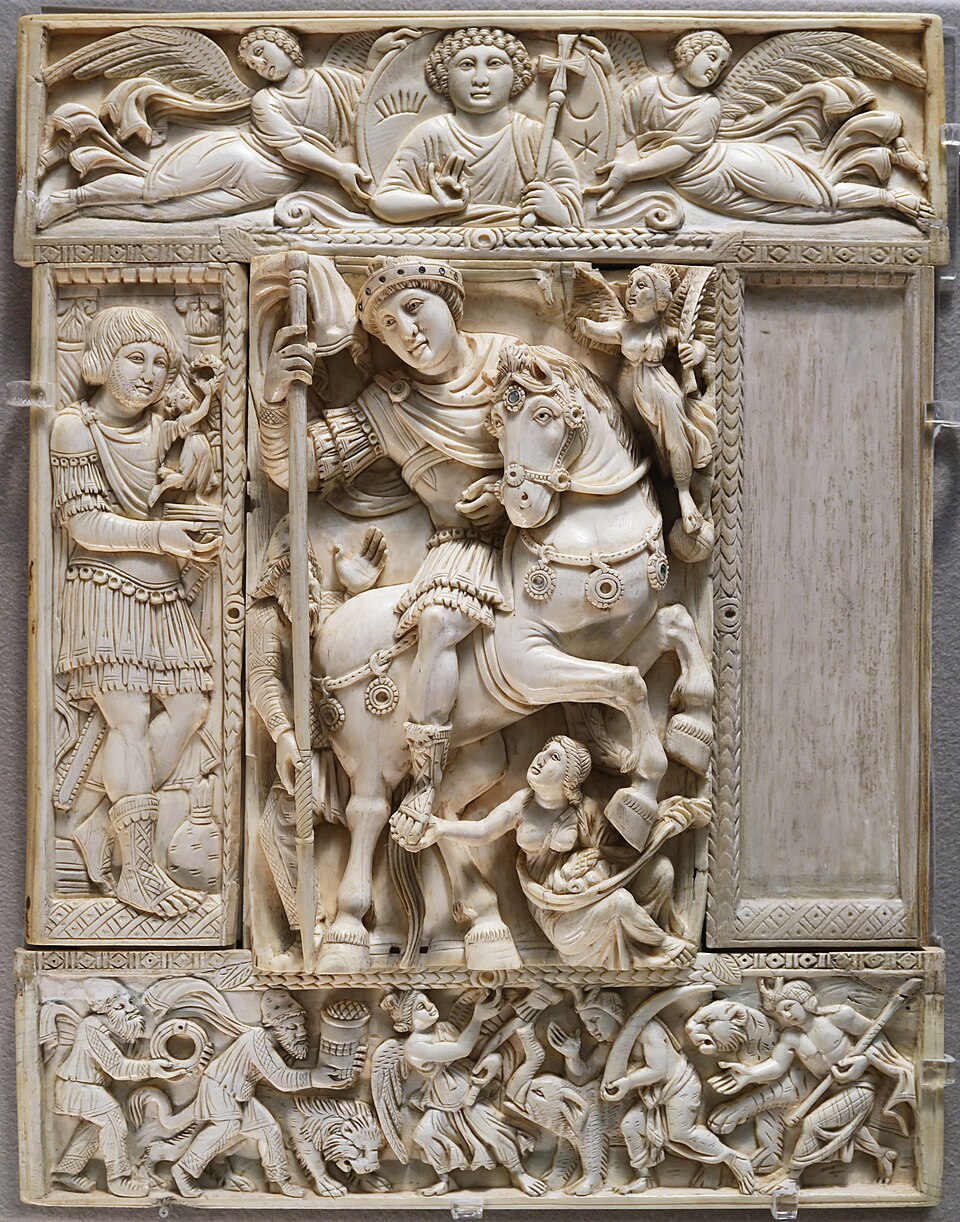
Barbarini Diptych, 6th c., Ivory, Byzantine
Like previous Equestrian portraits, what differentiates it is the figure holding the cross. Youthful and being held up by angels.
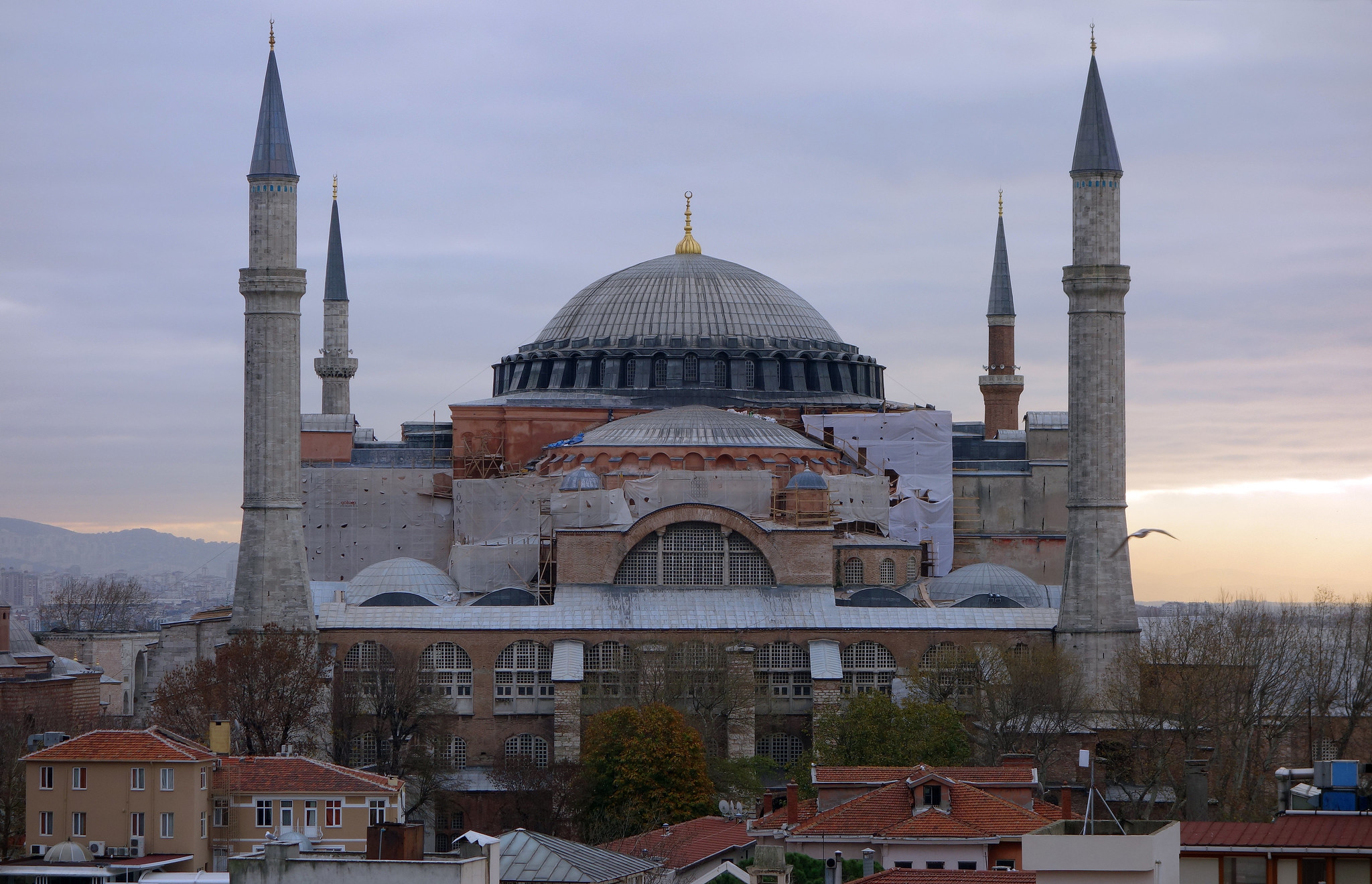
*Anthemius of Tralles & Isidorus of Miletus, Hagia Sophia, Istanbul, 532-37, Byzantine (S. 8.2-4)
Story goes when Justinian looks at the new church he says “Solomon, I’ve outdone you.” Created after previous was burned down by rioters. Looking at the church, it has a lot of domes, Separate spaces that are all in one. Church looks like it houses Intricate spaces.
Hagia Sophia interior. Has man apse, aisle, nave, in byzantine context it's called Naos. One major difference is that it's a central plan and a dome with the focal point at the center. This space is a Hybrid of a longitudinal plan and a central plan.
Angels are in the pendentive as a symbol that says Heave supports the dome
In the apse our attention is drawn to a figure of mary holding baby jesus
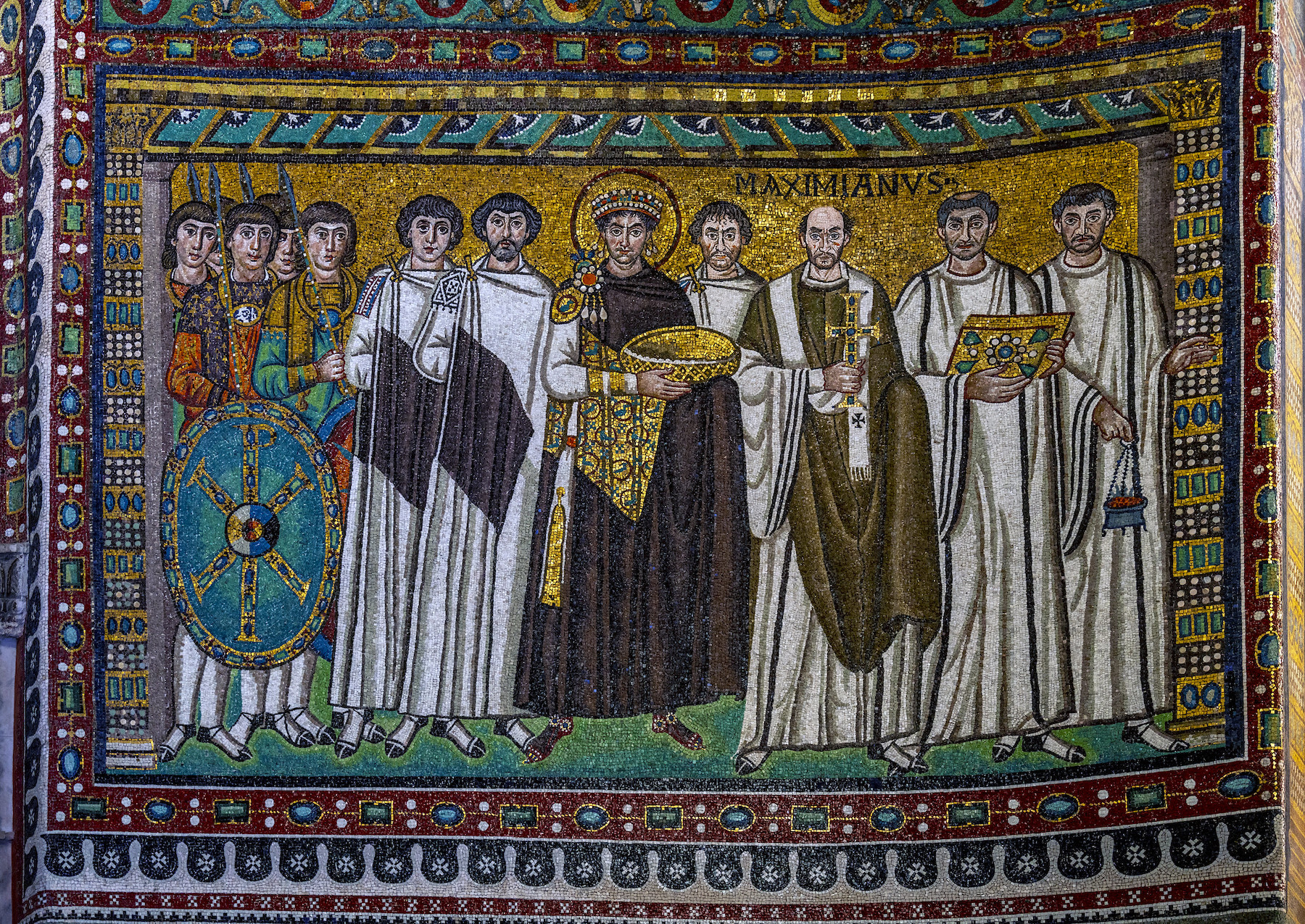
*Mosaics of Justinian & Theodora, Church of San Vitale, Ravenna, Italy, 547, Byzantine (S. 8.8-9)
Church of Aan Vitale, Revenna, Consecrated 547
Walls are made of marble
On it are two mosaic panels depicting Justinian and Theodora
On it we can see there is no naturalistic representation anymore.
Multiple figures that are static and flat often staring at you with little to no depth with a flat gold background. This lets us know we are in a heavenly space. Despite the grass the figures appear to be floating
Looking at the composition there are a lot of simulated gemstones
Byzantines are pros of bedazzling everything
Justinian is center, on his right representatives of the church, and on his left representatives of the state signifying that Justinian is head of both
He is holding a bowl that carries the Eucharist, he has the bread meaning you can’t have the church without him.
The guy with a name is the bishop maximiamus is leading
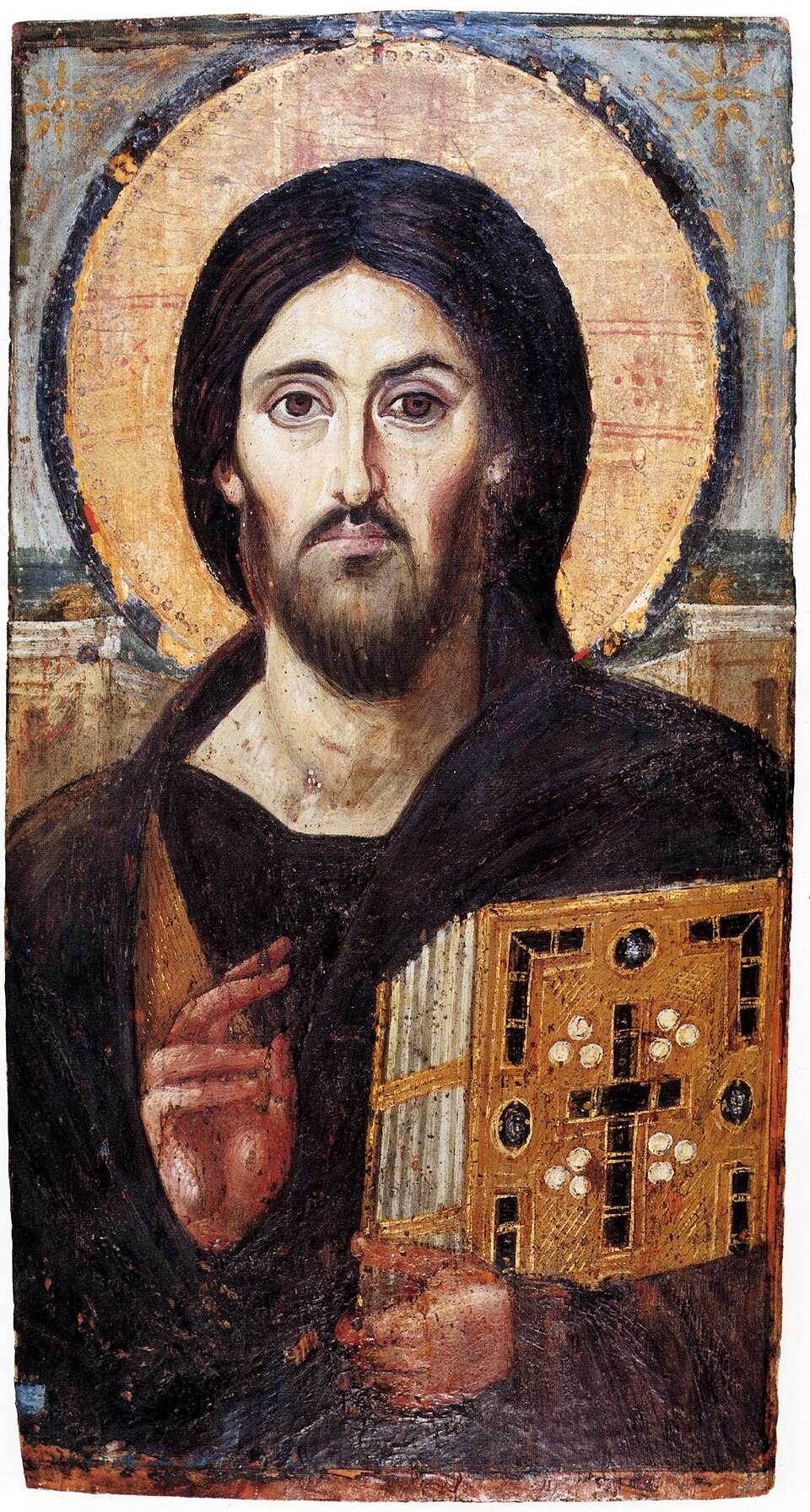
*Christ Pantokrator Icon, 500-599, Byzantine
Pray through the Icon to heaven. Halo, Fancy Halo and he his holding a scripture. Christ All Mighty
The right side of his face seems more serious, and the Left side is gentler and more relaxed.
This version of Christ holds the scripture of law, right side seems to be portraying Christ is job, left side is calmer and gentler, the side of him blessing.
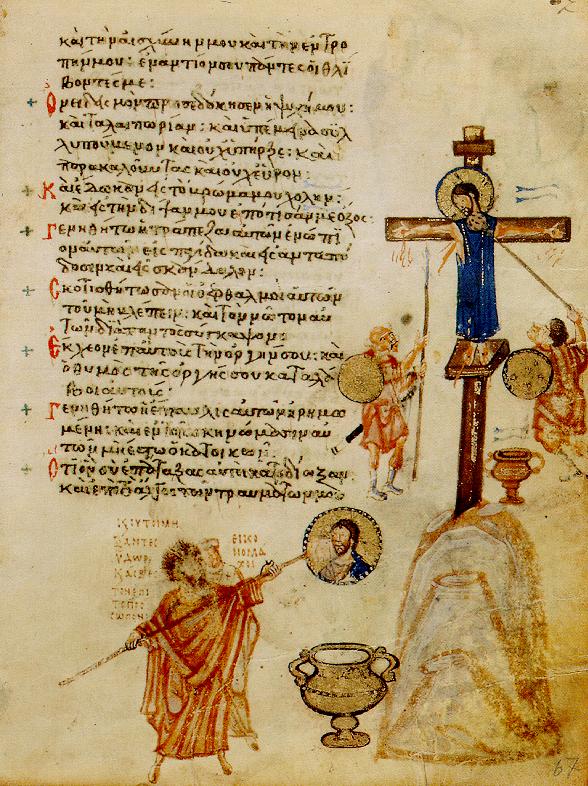
*Chludov Psalter, c. 850, Byzantine (S. 8.15)
Formal similarity between the 2 different scenes. Both have a character poking Christ with Christ having a halo. Same colors blue for Christ, and red for the people poking and soldiers. The artist wants you to make comparisons between those 2. On the left image the character in red is washing away the Christ Icon, and it's being compared to Jesus on the cross. The message is that destroying images of Christ is just as bad as crucifying Christ himself. The man washing the icon away has no face, because the artist got so sick of seeing John, he scratches it.
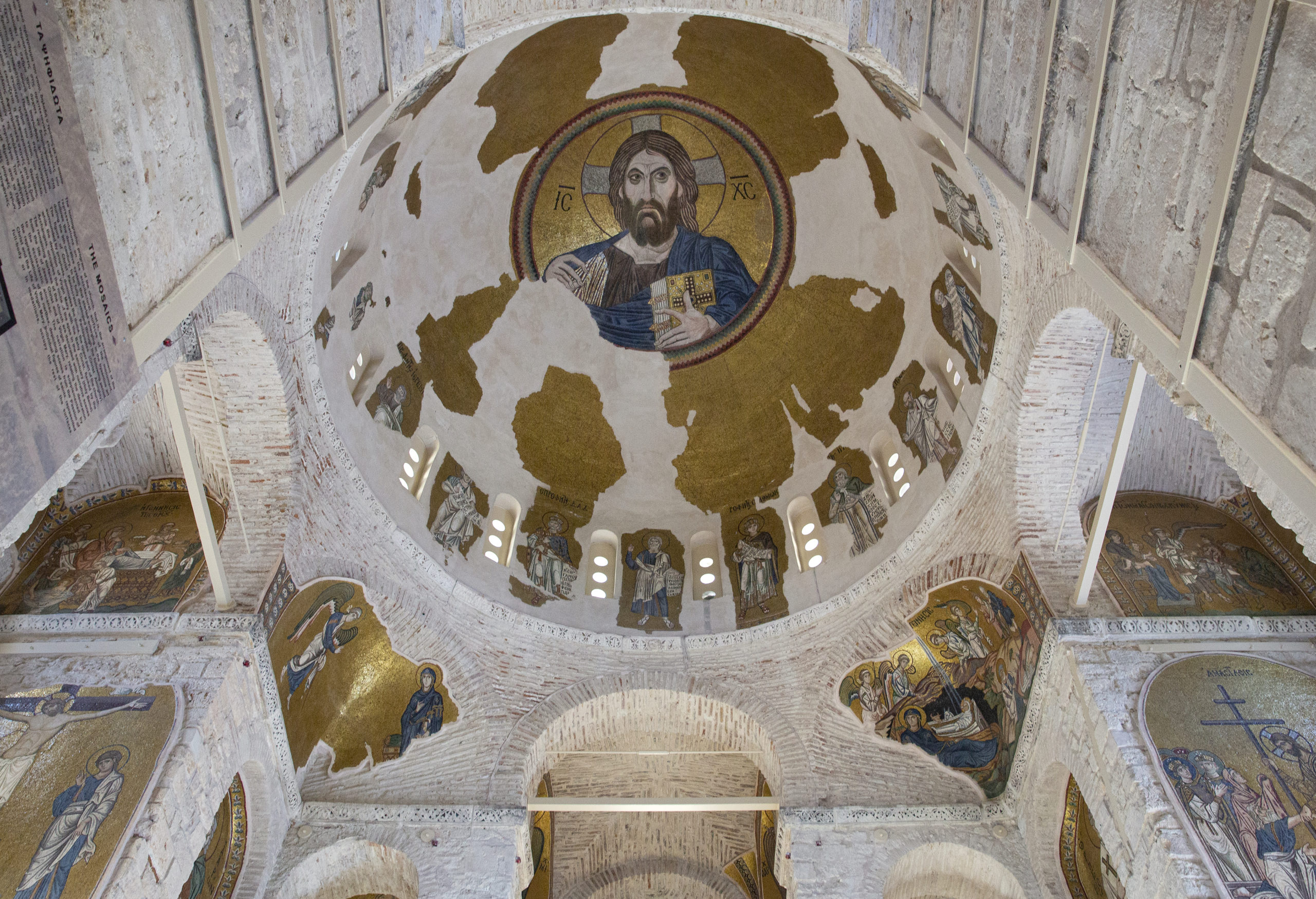
Katholikon, Hosios Loukos Monastery, near Phocis, Greece, early 11th c., Byzantine (S. 8.17-19)
Christ Almighty doing the same pose and idea as Christ Pantokrator
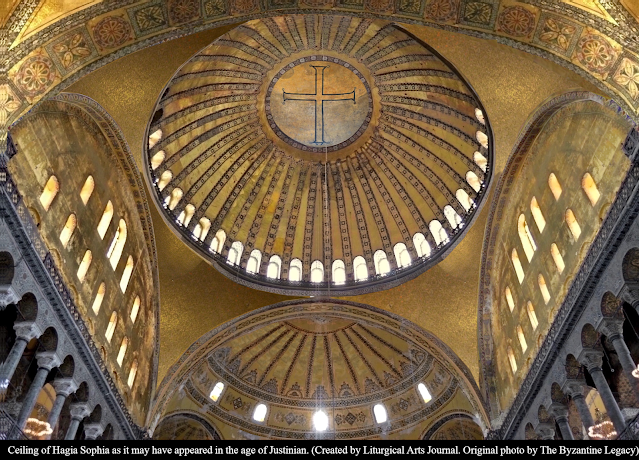
Procopius on the “Great Church” (Hagia Sophia), c. 550s:
A spherical-shaped dome standing upon this circle makes it exceedingly beautiful; from the
lightness of the building, it does not appear to rest upon a solid foundation, but to cover the
place beneath as though it were suspended from heaven by the fabled golden chain.
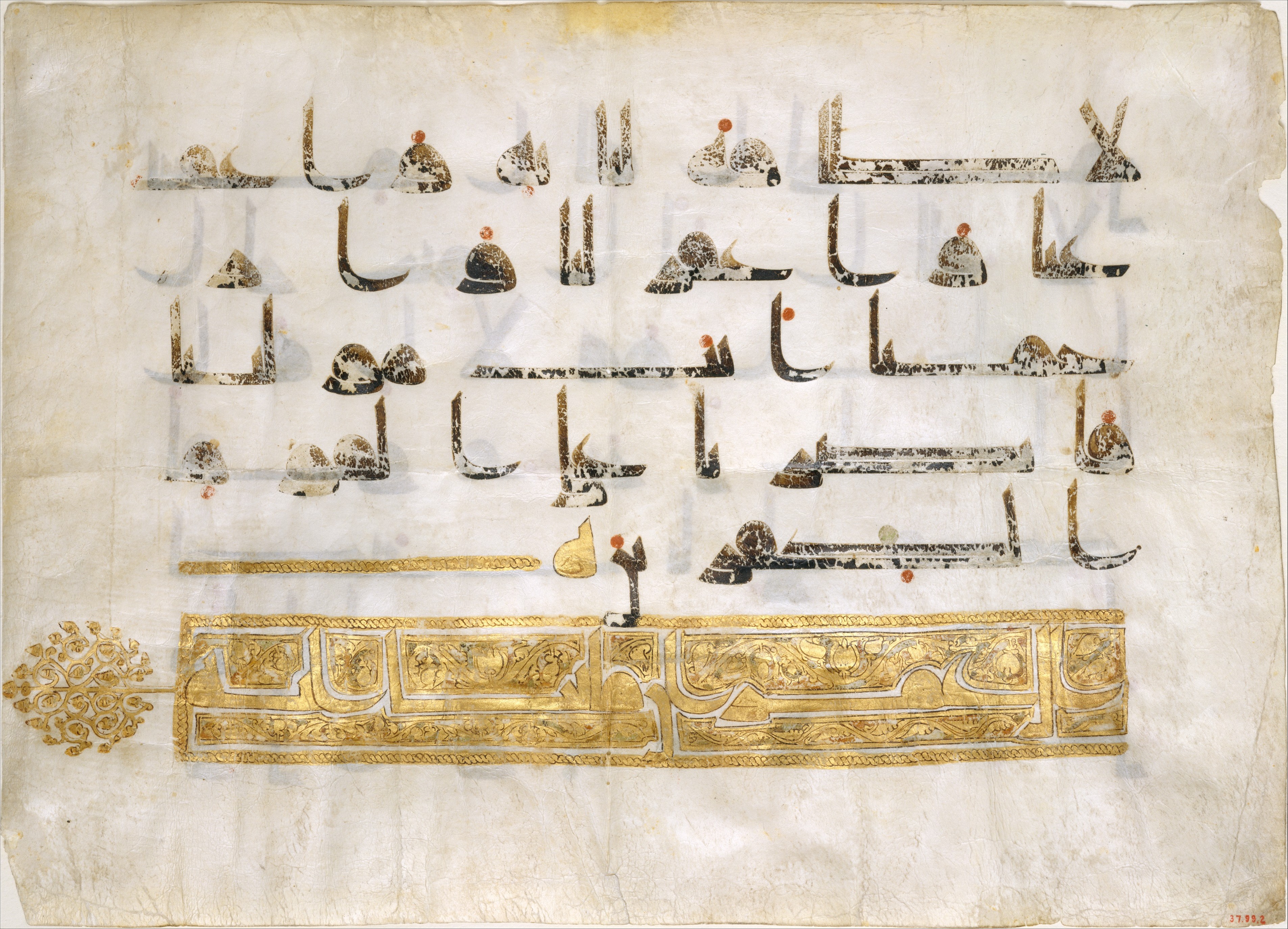
*Page from Qur’an, Syria, c. 800-899, vellum, Islamic (S. 9.10)
Kufic script, In Islam calligraphy is the highest form in image making. The word of God from Gabriel to humans.
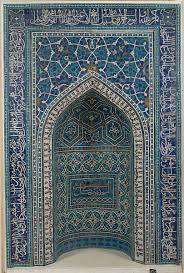
*Mihrab Niche from Isfahan, Iran, 1354-44, 11 ¼ feet high, Islamic (S. 9.17)
The Direction of the Mihrab is always pointing towards Mecca Despite the flowers it is geometrically precise with the flowers all have 6 points. Blue here is the color of the heavens. Gold text is a saying.
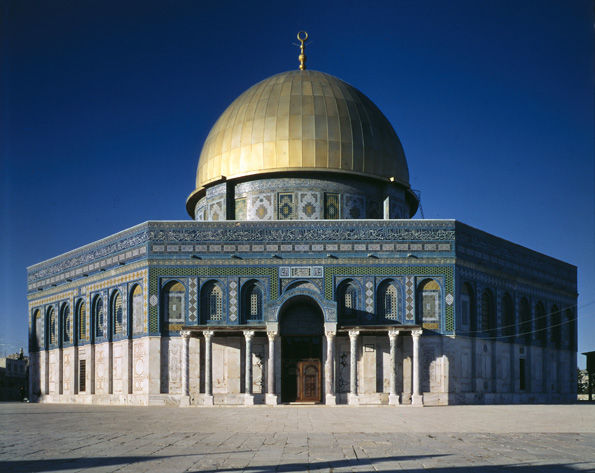
*Dome of the Rock, Jerusalem, completed 691, Islamic (S. 9.3-4)
Site of Muhammad ascending to God, Jewish Temple that the romans destroyed, Creation of Adam, Sacrifice of Isaac. A lot of Byzantine Influences.
Royal Commission
Central Plan
Ambulatories
In the Dome there a lot of Mosaic work, On it in between arches we see Byzantine and Sasanian Crowns in form of Mosaic this symbolizes that the current empire is better for they have conquered the land
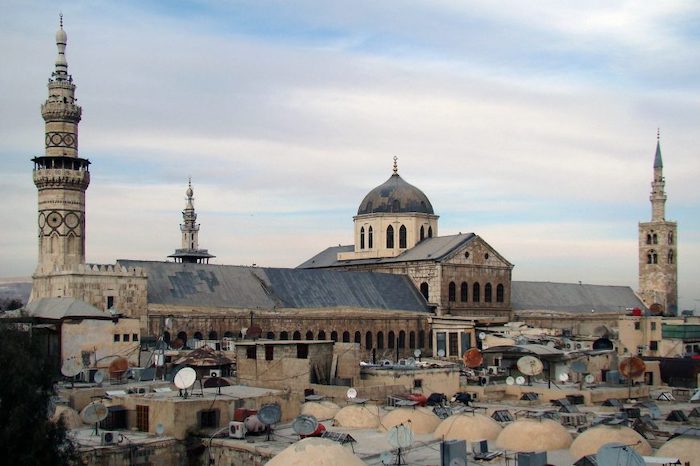
*Mosque of Damascus, Damascus, Syria, 706-715, Islamic (S. 9-5)
Byzantine influence:
The caliph requested skilled workers from the Byzantine Emperor, resulting in a building that blended Umayyad Islamic and Byzantine architectural features